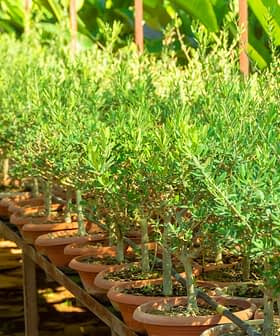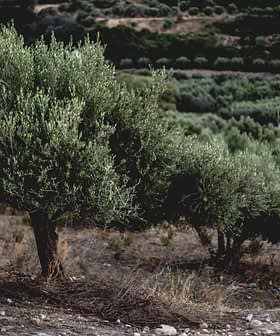Andalusia’s olive oil production in 2020 is expected to be up to 300,000 tons lower than previously predicted, due to the effects of a hot, dry autumn followed by a record-breaking cold winter.
According to figures published by Andalusia’s regional government, olive oil output in the 2020/21 crop year ranged between 1.05 and 1.1 million tons, significantly below its previous estimate of 1.348 million tons.
In a statement, the Andalusian agriculture ministry highlighted issues such as low rainfall, high temperatures in the autumn and damage caused by Atlantic storms, including Filomena, for the reduction in output.
See Also:2020 Harvest UpdatesThe initial estimate from last October was based on the average yield of oil per kilogram of olives from previous seasons; however, the extreme weather reduced that yield to its lowest level in 25 years.
This was due to unusually high temperatures in the first three weeks of November, which averaged around 15 ºC, more than two degrees higher than normal. Meanwhile, there were 55 fewer liters of rainfall per square meter than normal between September and November. As a result, the oil yield fell from a historical average of 21 percent to 17.7 percent.
This was followed by Storm Filomena, which brought freezing temperatures and caused some of the region’s trees to drop their olives. Farther north, Filomena dumped record levels of snow on Spain’s second-largest olive oil region, Castile-La Mancha, leading to severe losses of unharvested olives and further driving down Spain’s total olive oil yield.
Along with causing immediate damage, the Andalusian Phytosanitary Information and Alert Network (RAIF) warned that recent mild temperatures and wet weather had created the perfect storm for fungi and other plant pathogens.
Of particular concern to olive growers will be the repilo fungus, which causes olive leaf spot and grows on wild olives. The spores can then spread to cultivated trees.
The spread of repilo fungus is not uncommon at the end of winter in southern Spain; however, authorities warn that it could be especially bad ahead of the 2021 olive harvest.
While the bad weather has taken its toll on the current harvest, the bigger problem for Spanish producers remains the impact of American tariffs, according to Rafael Pico Lapuente, the executive director of the Spanish Association of Olive Oil Exporting, Industry and Commerce (Asoliva).
“The additional tariffs on olive oil produced and packaged in Spain have meant the loss of 80 percent of exports to the U.S.,” Pico Lapuente said. “This is on top of some 100,000 tons that other E.U. countries have stopped buying from Spain since these countries bottle the oil under their own brands and export it to the U.S.”
Producers and their associations have continued to pressure the Spanish government to negotiate with the U.S. to have the tariffs on agricultural goods, including packaged Spanish olive oils and green table olives, removed.
In turn, the Spanish government has urged the European Commission to open new trade negotiations with the U.S.








